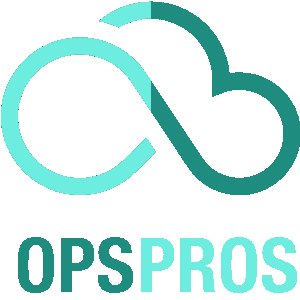
Did you know that according to recent industry analyzes, organizations that adopt DevOps testing methodologies are likely to deploy code up to 30 times more frequently than their competitors, with 50% fewer failures?
In our fast-evolving digital landscape, DevOps testing has emerged not just as a buzzword but as a crucial strategy that underlies the success of modern software delivery.
By fusing together continuous integration, test automation, and various other software testing practices, DevOps propels businesses towards achieving operational excellence and a competitive edge.
As a passionate advocate for efficiency and quality in software development, I’ve witnessed firsthand the transformative effects that a well-executed DevOps approach can have.
It’s about more than just merging operations with development; it’s an evolutionary step forward in how teams think about and carry out DevOps testing strategies.
With the right tools and methodologies, you can unlock a level of agility and responsiveness that was once thought unattainable, leading to reduced time-to-market and robust software solutions that users can rely on.
Key Takeaways
- Understanding the significance of DevOps testing in achieving quicker release cycles with reduced failure rates.
- Realizing the role of software testing within a DevOps culture to assure quality and reliability in product development.
- Discovering how to apply DevOps testing strategies for better operational efficiency and collaboration between teams.
The Role of DevOps Testing in Modern Software Development
We are standing at a technological crossroads where traditional software development approaches intersect with dynamic, innovative practices. As I turn the spotlight on DevOps testing, it becomes evidently clear that its integration is not merely optional but a critical component in steering modern development teams towards unprecedented efficiency and reliability. Indeed, what is DevOps for testing, if not the very backbone of improved software creation and deployment?
Understanding the DevOps Approach
At its core, DevOps embodies a philosophy that marries development (Dev) with operations (Ops), emphasizing a symbiotic relationship where both disciplines are no longer siloed but cooperative. Iterative development, automation, and continuous delivery, often perceived as buzzwords, here reveal their tangible value in enhancing the software lifecycle.
As I delve into the DevOps mechanics, I’ve noted that it extends beyond mere tooling—it’s an ethos that reshapes the cultural framework, driving teams to better adapt to market changes.
The Importance of Continuous Testing in DevOps
Continuous testing is the linchpin in the seamless machine of DevOps. Testing is no longer relegated to a final hurdle before deployment but is ingrained throughout the development cycle, from writing the first line of code to post-release support. I’ve seen firsthand that embedding testing in DevOps leads to consistent, immediate feedback on quality, performance, and security issues, which, in turn, reaffirms the place of quality assurance in DevOps as a central, rather than peripheral, function.
How DevOps Testing Improves Collaboration
Embracing testing in DevOps transcends its technical implications and nurtures a culture of collaboration. It is this culture that serves as a catalyst for breaking down traditional barriers between developers, QA engineers, and operations staff. My observations underscore that through DevOps, teams are unifying around a common goal: swift, reliable software delivery that doesn’t sacrifice quality for speed. As they converge their efforts, cross-functional synergy becomes the new norm, rather than the exception.
Integrating Testing Tools into Your DevOps Pipeline
In exploring the vast landscape of DevOps testing tools, my aim has been to identify and integrate the most proficient resources that align with agile testing in DevOps. The objective is twofold: to enhance the efficacy of the testing phase in DevOps and uphold the quality that our clients have come to expect.
In this pursuit, I’ve placed particular emphasis on ensuring that these tools not only streamline the development process but also infuse agility into our operations.
Tasked with the decision of which tools to incorporate into our pipeline, I’ve focused on evaluating options that cater to various stages of development and operational needs—from code analysis and security to performance testing and monitoring.
| Testing Tool Category | Tool Name | Core Function | Integration Ease | Agile Compatibility |
|---|---|---|---|---|
| Code Analysis | SonarQube | Static code analysis for identifying bugs and security hotspots | High | Excellent |
| Security Testing | OWASP ZAP | Automated security testing to identify vulnerabilities | High | Good |
| Performance Testing | JMeter | Load testing and measuring performance | Moderate | Very Good |
| Monitoring | Prometheus | Real-time monitoring and alerting | High | Good |
| User Experience Testing | Selenium | Automated browser testing for web applications | High | Excellent |
An integral component of any successful DevOps testing tools integration endeavor is the harmonious relationship between tools and the existing pipeline. I’ve discovered that tools like SonarQube and Selenium emerge as natural fits due to their highly compatible nature with agile practices. They’ve become indispensable parts of my team’s arsenal, enabling us to refine and advance our workflows continually.
Reflecting on the question, what is the testing phase of DevOps, I perceive it as a multifaceted period where testing is continuous and seamlessly woven into every aspect of the development cycle. By choosing tools that promote a culture of continuous improvement, we ensure that our DevOps pipeline remains both efficient and robust, irrespective of the rate or scale of change.
- Analyze the team’s specific needs and choose tools that align strategically with our goals.
- Adopt a meticulous approach to integrating chosen tools, considering their impact on both speed and quality.
- Continuously assess the performance and utility of integrated tools to maintain agility within our DevOps processes.
Code Sample
Here’s an example of how you could integrate SonarQube, a tool for code analysis, into your DevOps pipeline using a Jenkinsfile. Jenkins is a widely used automation server that can help manage continuous integration and delivery. This example will show how to add a SonarQube scan to your Jenkins pipeline.
Pre-requisites:
- Jenkins server with the SonarQube Scanner plugin installed.
- SonarQube server set up and running.
- Your project code is in a source control system accessible by Jenkins (e.g., GitHub).
Jenkinsfile Example:
This Jenkinsfile is written in Groovy, the scripting language used by Jenkins. It defines a pipeline with multiple stages including checking out code from a Git repository, running a SonarQube analysis, and then performing other actions like building and testing the code.
pipeline {
agent any
stages {
stage('Checkout') {
steps {
git url: 'https://your-git-repository-url.git', branch: 'main'
}
}
stage('SonarQube Analysis') {
steps {
script {
// Assuming you have set up SonarQube server details in Jenkins Global Configuration
withSonarQubeEnv('Your_SonarQube_Server_Name') {
sh 'mvn clean verify sonar:sonar'
}
}
}
}
stage('Build') {
steps {
sh 'mvn clean package'
}
}
stage('Test') {
steps {
sh 'mvn test'
}
}
// Add more stages as needed (e.g., deployment, notification)
}
post {
always {
// Actions to perform after pipeline completion
echo 'Pipeline execution complete!'
}
}
}Explanation:
- Checkout Stage: Retrieves the code from your Git repository.
- SonarQube Analysis Stage: Performs a SonarQube scan using the Maven SonarQube plugin. It assumes you have configured your Maven
pom.xmlfile for SonarQube. - Build and Test Stages: Here, Maven is used to build the application and run unit tests. This can be adjusted according to the build tools and frameworks you are using.
- Post Section: Defines actions to perform after the pipeline execution, regardless of the outcome.
Integration Steps:
- Place this Jenkinsfile in the root directory of your project repository.
- Configure a Jenkins pipeline job to use this Jenkinsfile.
- Ensure your Jenkins has the necessary plugins and configuration to connect to your SonarQube server.
- Run the pipeline in Jenkins to see the integration in action.
This example demonstrates a basic integration. Depending on your specific requirements, you may need to customize the pipeline further, such as adding deployment stages, more sophisticated testing, or additional analysis tools.
By conscientiously applying these practices, I am confident that the teams I guide can realize the full potential of their DevOps pipeline, cementing a reputation for excellence in the ever-evolving realm of software development.
Applying Test Automation for Faster Delivery Cycles

In the realm of modern software development, test automation is the catalyst that accelerates delivery cycles while maintaining a high standard of quality. Understanding its nuanced role within DevOps, we recognize that automating tests is a lever crucial for achieving greater throughput in releases without compromising on the stringent requirements of test-driven development. It is here that choosing the right set of tools, framing an effective strategy, and evaluating automation’s impact become pivotal.
Choosing the Right Tools for Test Automation
The selection of test automation tools is a strategic decision that can significantly impact delivery efficiency. Tools must align with the core tenets of test-driven development and support the scalability and integration capabilities necessary in a cohesive DevOps environment. To illustrate, let’s examine a comparative table that details several tools and their potential fit within a DevOps framework.
| Name | Support for Test-Driven Development | Scalability | Integration Capabilities |
|---|---|---|---|
| Selenium | High | High | Extensive |
| TestNG | High | Moderate | Moderate |
| Cucumber | High | High | Extensive |
| JUnit | High | Low | Limited |
Creating a Test Automation Strategy
A robust test automation strategy is the blueprint that ensures test automation efficiently contributes to software development and deployment processes. Key steps in crafting this strategy include defining clear goals, selecting suitable frameworks, identifying what test cases to automate, and determining how these automated tests fit within the continuous deployment pipeline. My approach has always been to create an iterative plan that allows for feedback and improvement over time, aligning with the dynamic nature of DevOps methodologies.
Measuring the Effectiveness of Automated Testing
To assess the true value of test automation, we need to measure the effectiveness and impact of our automated processes. Metrics such as the number of defects caught, the time saved per testing cycle, and the overall improvement in release velocity provide insights into how beneficial automation is. An often-asked question is whether DevOps engineers do testing, and the answer is yes, they often play a crucial role in executing and refining automated tests, ensuring that QA testing is integrated into the entire DevOps lifecycle. Let’s quantify this impact with some industry-accepted metrics:
- Reduction in regression testing time from automation
- Increase in code coverage achieved
- Percentage decrease in post-release defects
- Improvement in deployment frequency
By effectively leveraging test automation within DevOps practices, we tackle the complex challenges of blending quality with speed—redefining what it means to deliver software in today’s fast-paced technological landscape.
Best Practices for Continuous Integration and Testing

As we dive into the nuances of DevOps testing strategies, employing best practices for continuous integration and testing becomes paramount. My journey navigating the complexities of software development has affirmed the transformative power of integrating agile methodologies with diligent quality assurance for CI/CD.
Firstly, integrating a comprehensive suite of regression tests into the CI setup is a practice I advocate zealously. Automated regression tests catch new bugs introduced by recent changes, ensuring previous functionalities remain untouched and robust. This step aids in maintaining high quality, even as the software evolves at a rapid pace.
The emphasis on early bug detection within an agile framework cannot be overstated. By fostering a culture that encourages identifying and addressing defects promptly in the development cycle, teams circumvent the costly repercussions of late-stage bug discovery. It’s a strategy that intertwines quality assurance with development seamlessly, manifesting the true essence of DevOps.
Moreover, automating the build-and-test phases is crucial for guaranteeing consistency across diverse environments. Automation here not only streamlines workflows but also minimizes human errors, translating to reliable deliveries.
The implementation of such automation typifies the core objectives of agile testing, namely to optimize speed and ensure precision.
- Strictly implement version control to manage codebase changes and track each stage of development.
- Schedule frequent but manageable commits to facilitate smaller, more frequent integrations and simplify debugging when issues arise.
- Automate the deployment of code to a staging environment after a successful integration and testing phase.
- Maintain a battery of automated tests, including unit, integration, and acceptance tests, to be run against every build.
- Employ monitoring tools post-deployment to continually assess application performance against real-world use cases.
My steadfast commitment to these principles has culminated in a CI pipeline that not only meets but exceeds the demands of today’s fast-moving software release cycles. It is within the weave of continuous integration and testing interlocked with DevOps testing strategies and agile testing that the fabric of superior quality assurance is formed, underpinning the success of any software development team.
Conclusion
By embracing continuous testing and integrating test-driven development, organizations have a better shot at reducing time-to-market and elevating software quality. These methodologies foster a harmonious culture that thrives on collaboration and responsiveness to incessant changes in the technological landscape.
External Resources
https://www.puppet.com/resources/history-of-devops-reports
https://www.sonarsource.com/products/sonarqube/
FAQ

What is DevOps for testing?
DevOps for testing refers to the integration of testing into the DevOps process. It emphasizes close collaboration between software developers, quality assurance (QA) teams, and operations professionals throughout the software development lifecycle. It involves continuous integration, continuous testing, and test automation to ensure faster delivery and high-quality software.
Is QA testing part of DevOps?
Yes, QA testing is an integral part of DevOps. The purpose of including QA testing within DevOps is to enable a shift-left approach, where testing is performed earlier in the software development lifecycle. This leads to early detection of issues, allowing teams to address them promptly, resulting in a more efficient and stable release process.
Do DevOps engineers do testing?
DevOps engineers often participate in testing, though their primary focus may be on the automation of testing and deployment processes rather than executing test cases manually. By incorporating test automation into the continuous integration and delivery pipeline, DevOps engineers help ensure that testing is a consistent and streamlined part of the software release cycle.
What is the testing phase in DevOps?
The testing phase in DevOps is not a discrete phase like in traditional Waterfall models but a continuous process that occurs alongside development and operations activities. It involves automated testing as part of continuous integration, where code changes are automatically built, tested, and prepared for release. This phase ensures that newly integrated features work correctly and do not introduce regressions.
How does continuous integration and testing fit into DevOps?
Continuous integration (CI) and testing are fundamental to DevOps. CI involves merging code changes into a shared repository frequently, which triggers an automated build and testing process to verify each integration. Continuous testing runs alongside CI, where automated tests are executed to validate code changes, ensuring that bugs are caught early and quality is maintained throughout the development process.
What are the best practices for agile testing in DevOps?
Best practices for agile testing in DevOps include implementing automated testing wherever possible, fostering a culture of continuous learning and improvement, integrating testing throughout the entire development lifecycle, and enhancing collaboration among developers, testers, and operations teams. It’s also crucial to maintain a robust suite of regression tests and to leverage feedback from testing to inform development and operations decisions.
Which strategies are essential for DevOps testing?
Essential strategies for DevOps testing include adopting test-driven development (TDD), automating the testing process, employing continuous integration, and ensuring continuous delivery. It also involves implementing a comprehensive test automation strategy, leveraging the right set of testing tools, and maintaining an ongoing feedback loop between the development, QA, and operations teams.
How can you measure the effectiveness of automated testing in DevOps?
The effectiveness of automated testing in DevOps can be measured through various metrics, such as the number of defects caught by tests, the time taken to run tests, the frequency of test runs, the percentage of test coverage, and the reduction in time to market for releases.
Additionally, feedback from the development and operations teams on the relevance and accuracy of test results can provide insight into the testing process’s effectiveness.
James is an esteemed technical author specializing in Operations, DevOps, and computer security. With a master’s degree in Computer Science from CalTech, he possesses a solid educational foundation that fuels his extensive knowledge and expertise. Residing in Austin, Texas, James thrives in the vibrant tech community, utilizing his cozy home office to craft informative and insightful content. His passion for travel takes him to Mexico, a favorite destination where he finds inspiration amidst captivating beauty and rich culture. Accompanying James on his adventures is his faithful companion, Guber, who brings joy and a welcome break from the writing process on long walks.
With a keen eye for detail and a commitment to staying at the forefront of industry trends, James continually expands his knowledge in Operations, DevOps, and security. Through his comprehensive technical publications, he empowers professionals with practical guidance and strategies, equipping them to navigate the complex world of software development and security. James’s academic background, passion for travel, and loyal companionship make him a trusted authority, inspiring confidence in the ever-evolving realm of technology.







